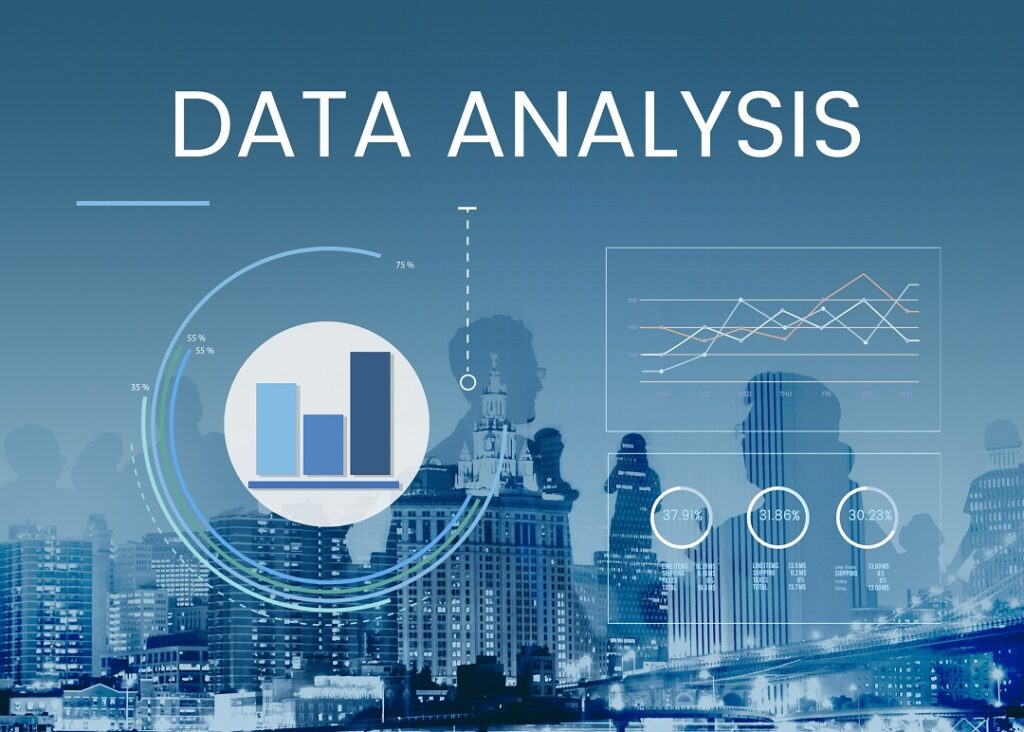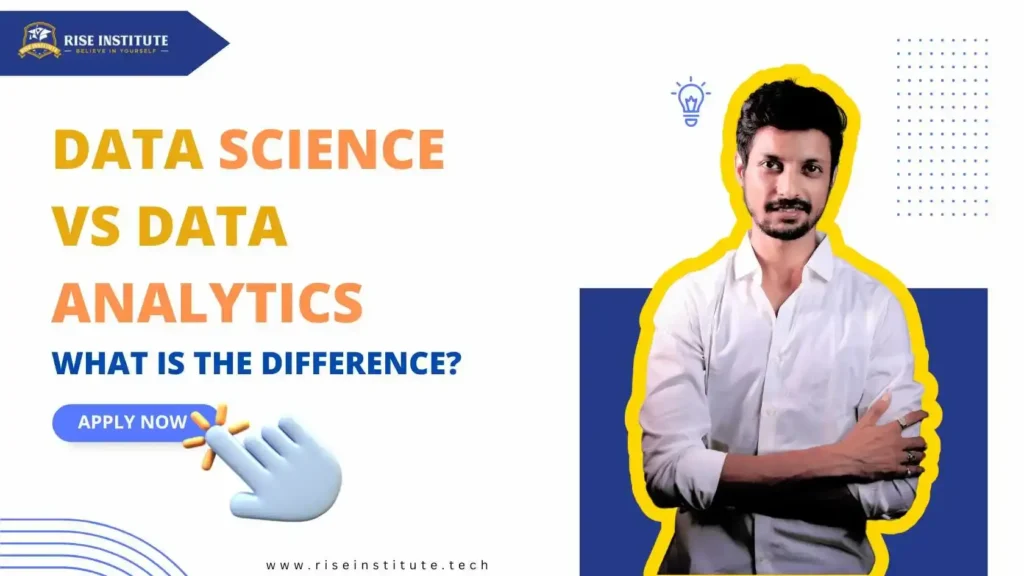Introduction
In the ever-evolving landscape of technology, two powerhouse terms that often find themselves intertwined yet hold distinct significance are “Data Science” and “Data Analytics.” While both revolve around the utilization of data to derive insights, their methodologies, objectives, and applications diverge significantly. In this comprehensive guide, we unravel the intricate disparities between data science and data analytics, shedding light on their unique attributes and the pivotal roles they play in driving organizational success.
Understanding Data Science
In today’s digital age, the terms “Data Science” vs “Data Analytics” are often used interchangeably, leading to confusion about their distinct roles and functionalities. While both fields deal with data and aim to extract valuable insights, they have nuanced differences that are crucial to understand.
Data science can be perceived as the multidisciplinary domain that encompasses various techniques, algorithms, and tools to extract meaningful insights and knowledge from structured and unstructured data. At its core, data science integrates elements of statistics, mathematics, computer science, and domain expertise to uncover hidden patterns, trends, and correlations within datasets. The overarching objective of data science is to leverage these insights to inform decision-making, predict future outcomes, and drive innovation across diverse industries.
On the other hand, data analytics focuses more on the analysis of data to identify trends, patterns, and metrics that can be used to optimize processes and make informed business decisions. While data science involves a broader scope, including data collection, cleaning, analysis, and interpretation, data analytics tends to concentrate on analyzing past data to understand current trends and make predictions for the future.
One way to distinguish between data science vs data analytics is to think of data science as the foundation that encompasses various techniques and methodologies, including data analytics, machine learning, artificial intelligence, and big data analytics. Data analytics, on the other hand, is a subset of data science, focusing primarily on analyzing data to derive insights and make data-driven decisions.
In practice, data scientists often work on the entire data lifecycle, from data collection and preprocessing to analysis, modeling, and interpretation. They utilize a wide range of tools and techniques, such as statistical analysis, machine learning algorithms, data visualization, and predictive modeling, to extract actionable insights from data.
In contrast, data analysts typically focus on analyzing data using statistical methods, SQL queries, and data visualization tools to generate reports, dashboards, and visualizations that help businesses understand their data better and make informed decisions. While data scientists are more involved in developing predictive models and machine learning algorithms, data analysts specialize in descriptive analytics, summarizing historical data to provide insights into past performance and trends.
Despite these differences, both data science and data analytics play critical roles in today’s data-driven world. Organizations across industries rely on data scientists and data analysts to unlock the value of their data, gain a competitive edge, and drive strategic decision-making. Whether it’s optimizing marketing campaigns, improving customer experience, or predicting market trends, data science and data analytics are indispensable tools for driving organizational success.
In conclusion, while data science and data analytics are closely related fields, they have distinct roles and functionalities within the broader spectrum of data analysis. Understanding the differences between these two disciplines is essential for organizations looking to harness the full potential of their data and stay ahead in today’s competitive business landscape.

Difference between data science vs data analytics in table form:
Data Science | Data Analytics |
Skillsets include-
| Skillsets include-
|
The scope is large scale. | The scope is small scale. |
| Explore and uncover new questions and their answers. | Achieve your objectives by leveraging available data and implementing the right actions. |
Key Components of Data Science:
Data Collection and Cleaning: The initial phase of any data science project involves gathering relevant datasets from disparate sources and cleansing them to ensure accuracy and consistency.
Exploratory Data Analysis (EDA): Through EDA, data scientists aim to understand the underlying structure of the data, identify outliers, and discern meaningful patterns that can guide subsequent analysis.
Machine Learning and Predictive Modeling: Machine learning algorithms play a pivotal role in data science, facilitating predictive modeling, classification, clustering, and anomaly detection tasks.
Data Visualization: Communicating insights effectively is crucial in data science. Data visualization techniques help in representing complex findings in a visually intuitive manner, enabling stakeholders to grasp insights effortlessly.
Deployment and Monitoring: The deployment of data-driven solutions and models marks the culmination of the data science process. Continuous monitoring ensures the performance and relevance of deployed models over time.
Deciphering Data Analytics
Data science and data analytics are two terms that frequently crop up in discussions surrounding data-driven decision-making. While they are often used interchangeably, they represent distinct methodologies and approaches to harnessing the power of data for organizational success. In contrast to the holistic approach of data science, data analytics primarily focuses on examining datasets to draw conclusions and make informed decisions. While data analytics shares some commonalities with data science, such as utilizing statistical techniques and visualization tools, its scope is often narrower, emphasizing descriptive and diagnostic analyses rather than predictive modeling or prescriptive recommendations.
Data science encompasses various activities, including data collection, cleaning, exploration, modeling, and interpretation. It involves the application of advanced algorithms and machine learning techniques to extract meaningful insights from vast and complex datasets. Data scientists are skilled in programming languages like Python and R and in deploying tools such as TensorFlow and PyTorch for deep learning tasks. They possess a deep understanding of mathematical concepts, probability theory, and computer science principles, allowing them to develop sophisticated models for predicting future trends, optimizing processes, and identifying hidden patterns within data.
On the other hand, data analytics tends to focus on utilizing historical data to understand past performance and inform present decisions. It involves data mining, clustering, regression analysis, and visualization to uncover trends, patterns, and correlations within the data. Data analysts often work with business intelligence tools like Tableau, Power BI, or Google Data Studio to create interactive dashboards and reports that facilitate data-driven decision-making across various organizational departments. They play a crucial role in identifying opportunities for optimization, troubleshooting operational inefficiencies, and assessing the impact of strategic initiatives.
While data science and analytics aim to derive insights from data, their methodologies, objectives, and applications differ significantly. Data science is more concerned with predictive modeling and leveraging machine learning algorithms to forecast future outcomes. In contrast, data analytics is focused on retrospective analysis and generating actionable insights from historical data. Additionally, data science often requires more profound mathematics, statistics, and computer science expertise. In contrast, data analytics may be more accessible to individuals with a business, economics, or social sciences background.
In summary, while data science and analytics are closely related disciplines, they serve distinct purposes within data-driven decision-making. Data science encompasses a broader range of activities. It is geared towards predictive modeling and advanced algorithm development, while data analytics is more focused on descriptive and diagnostic analysis to support immediate decision-making. By understanding the differences between these two fields and leveraging their respective strengths, organizations can unlock the full potential of their data assets and gain a competitive edge in today’s data-driven landscape.
Key Components of Data Analytics:
- Descriptive Analytics: Descriptive analytics summarizes historical data to gain insights into past performance, trends, and patterns. Aggregation, summarization, and visualization are employed to facilitate this process.
- Diagnostic Analytics: Diagnostic analytics delves deeper into the underlying causes of observed phenomena, aiming to identify factors contributing to specific outcomes or anomalies within the data.
- Predictive Analytics (in some cases): While not as pervasive as in data science, predictive analytics may still play a role in specific data analytics initiatives, particularly those focused on forecasting future trends or outcomes based on historical data patterns.
- Business Intelligence (BI) Tools: Data analytics often leverages business intelligence tools such as Tableau, Power BI, or Google Data Studio to create interactive dashboards and reports, enabling stakeholders to gain actionable insights quickly.
Contrasting Methodologies
- In the ever-expanding realm of technology-driven decision-making, understanding the nuances between data science and data analytics is crucial for organizations aiming to harness the power of data effectively. At the core of this understanding lies the recognition of their differing methodologies and objectives.
- Data science is a comprehensive framework that traverses the entire spectrum of data utilization from inception to implementation. It encompasses the intricate data collection, preprocessing, modeling, and deployment process underpinned by a sophisticated array of techniques, including machine learning and advanced algorithms. Data scientists delve into vast datasets, seeking patterns, trends, and correlations that can yield predictive insights to guide strategic decision-making processes. By harnessing the power of machine learning models, data science empowers organizations to anticipate future trends, forecast outcomes, and optimize operations proactively.
- In contrast, data analytics centers on the retrospective examination of data to uncover valuable insights that drive immediate actions. It predominantly focuses on descriptive and diagnostic analyses, illuminating historical trends and elucidating the underlying factors contributing to past outcomes. Data analysts leverage statistical methods and visualization tools to distill complex datasets into comprehensible narratives, enabling stakeholders to gain actionable insights swiftly. By scrutinizing past performance metrics and key performance indicators (KPIs), data analytics facilitates real-time informed decision-making, thereby enhancing operational efficiency and driving organizational growth.
- Despite their distinct methodologies and objectives, data science and data analytics are not mutually exclusive; they complement each other synergistically to unlock the full potential of data-driven insights. While data science pioneers the development of predictive models and algorithms, data analytics provides the context and interpretation necessary for translating these insights into actionable strategies. Together, they form an integrated approach to data analysis, empowering organizations to harness the power of data at every stage of the decision-making process.
- Moreover, data science and analytics applications extend across diverse industries, from finance and healthcare to marketing and manufacturing. In finance, for instance, data scientists leverage predictive modeling techniques to forecast market trends, identify investment opportunities, and mitigate risks effectively. Concurrently, data analysts dissect historical financial data to assess performance metrics, detect anomalies, and optimize portfolio management strategies in real time. Similarly, in healthcare, data science enables the development of predictive models for disease diagnosis, treatment optimization, and patient outcome forecasting. At the same time, data analytics aids healthcare providers in analyzing patient records, optimizing resource allocation, and improving clinical decision-making processes.
- In conclusion, while the dichotomy between data science and data analytics delineates their respective methodologies and objectives, their collective impact on organizational success is undeniable. By harnessing the power of data science and data analytics in tandem, organizations can unlock invaluable insights, drive innovation, and gain a competitive edge in today’s data-driven landscape. Whether predicting future trends or optimizing operational efficiency, the synergy between data science and data analytics paves the way for transformative growth and sustainable success.
Applications Across Industries
In today’s data-driven world, Data Science vs Data Analytics are indispensable pillars of innovation and decision-making across industries. Despite their frequent interchangeability, these terms denote distinct disciplines with unique methodologies and objectives. It’s crucial for organizations to grasp the disparities between data science vs data analytics to effectively harness the power of their data.
Data science vs Data Analytics encompasses a broad spectrum of activities, from data collection to interpretation, employing techniques from statistics, mathematics, and computer science. Data scientists excel in building predictive models, identifying trends, and unraveling hidden relationships within complex datasets. On the other hand, data analytics focuses on exploring and interpreting data to support decision-making, emphasizing descriptive and diagnostic analytics. Data analysts play a pivotal role in transforming raw data into actionable insights for quick decision-making.
Both data science and data analytics find diverse applications across industries like finance, healthcare, retail, and marketing. While data science excels in predictive modeling and pattern recognition tasks, data analytics shines in scenarios requiring rapid analysis and reporting. Despite their distinct roles, these disciplines often complement each other in practice, fostering synergy to unlock the full potential of data assets and drive innovation at scale.
In conclusion, while data science and data analytics share common objectives, they represent distinct disciplines with unique methodologies and applications. Understanding their differences and leveraging their strengths empowers organizations to gain a competitive edge and foster growth in the digital era
Data Science Applications:
- Healthcare: Predictive analytics models aid in disease diagnosis, treatment optimization, and personalized medicine initiatives.
- Finance: Risk assessment, fraud detection, algorithmic trading, and customer segmentation are prominent applications of data science in the finance sector.
- E-commerce: Recommendation engines, dynamic pricing strategies, and customer churn prediction models enhance user experience and drive revenue in e-commerce platforms.
- Manufacturing: Predictive maintenance, supply chain optimization, and quality control rely heavily on data science techniques to improve operational efficiency and reduce downtime.
Data Analytics Applications:
- Marketing: Data analytics informs marketing strategies through customer segmentation, campaign performance analysis, and sentiment analysis of social media data.
- Retail: Retailers leverage data analytics to optimize inventory management, forecast demand, and personalize the shopping experience for customers.
- Human Resources: HR analytics aids in talent acquisition, employee engagement analysis, and workforce planning, enabling organizations to make data-driven decisions in managing their human capital.
- Customer Service: Data analytics techniques such as text mining and sentiment analysis are employed to enhance customer service experiences through real-time feedback analysis and issue resolution.
Data Analytics Applications:
In summary, while data science and data analytics share common objectives of leveraging data to drive insights and inform decision-making, their methodologies, scope, and applications exhibit notable distinctions. Data science encompasses a broader spectrum of activities, including predictive modeling and machine learning, making it well-suited for tackling complex, future-oriented challenges. On the other hand, data analytics excels in extracting actionable insights from historical data, catering to immediate decision-making needs within organizations.
Ultimately, the choice between data science and data analytics hinges on factors such as the organization’s objectives, the nature of the data at hand, and the desired depth of analysis. By understanding the nuances between these two disciplines, aspiring data professionals and organizations alike can chart a strategic course towards harnessing the full potential of data-driven insights in today’s data-centric world.




